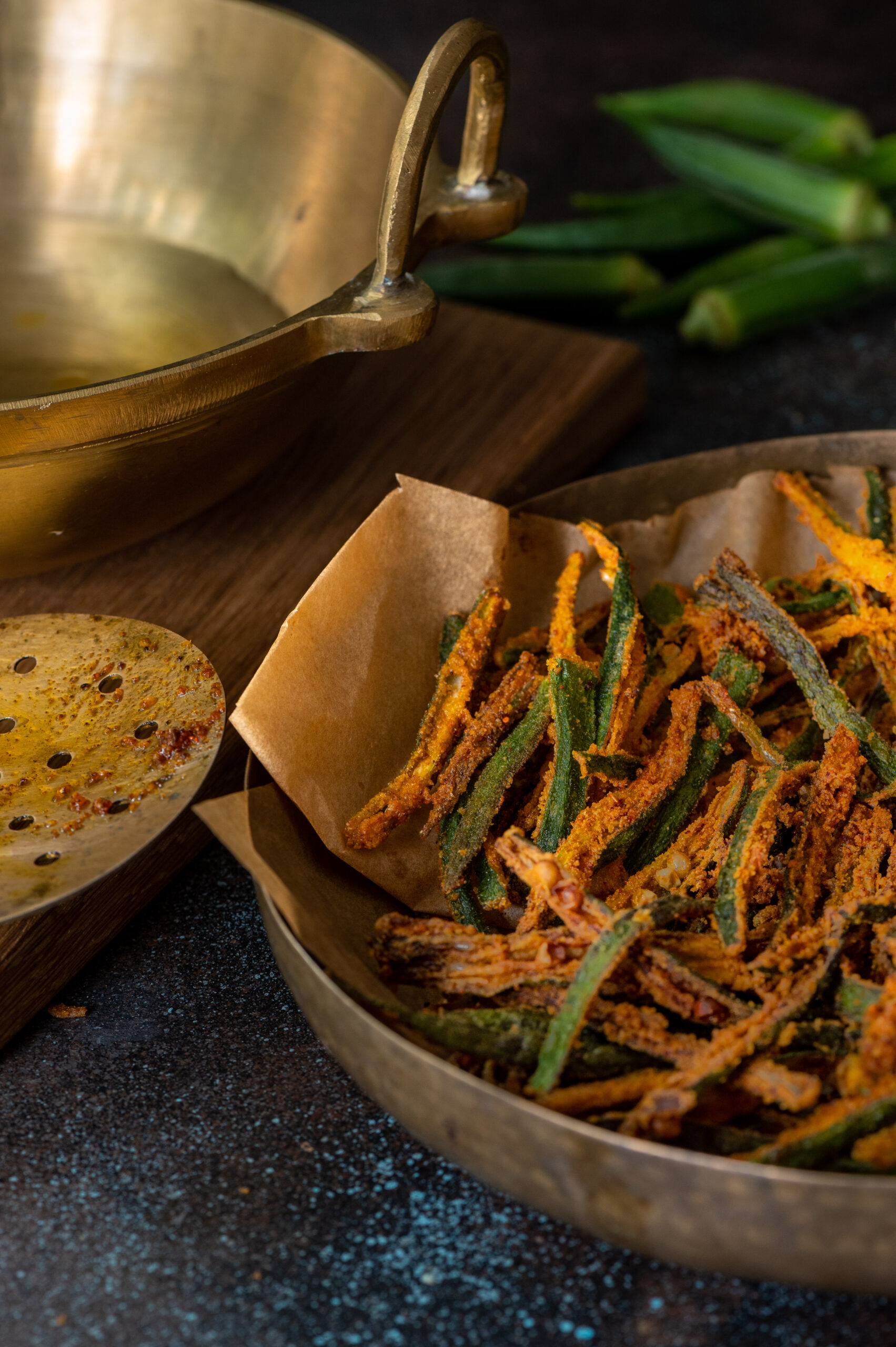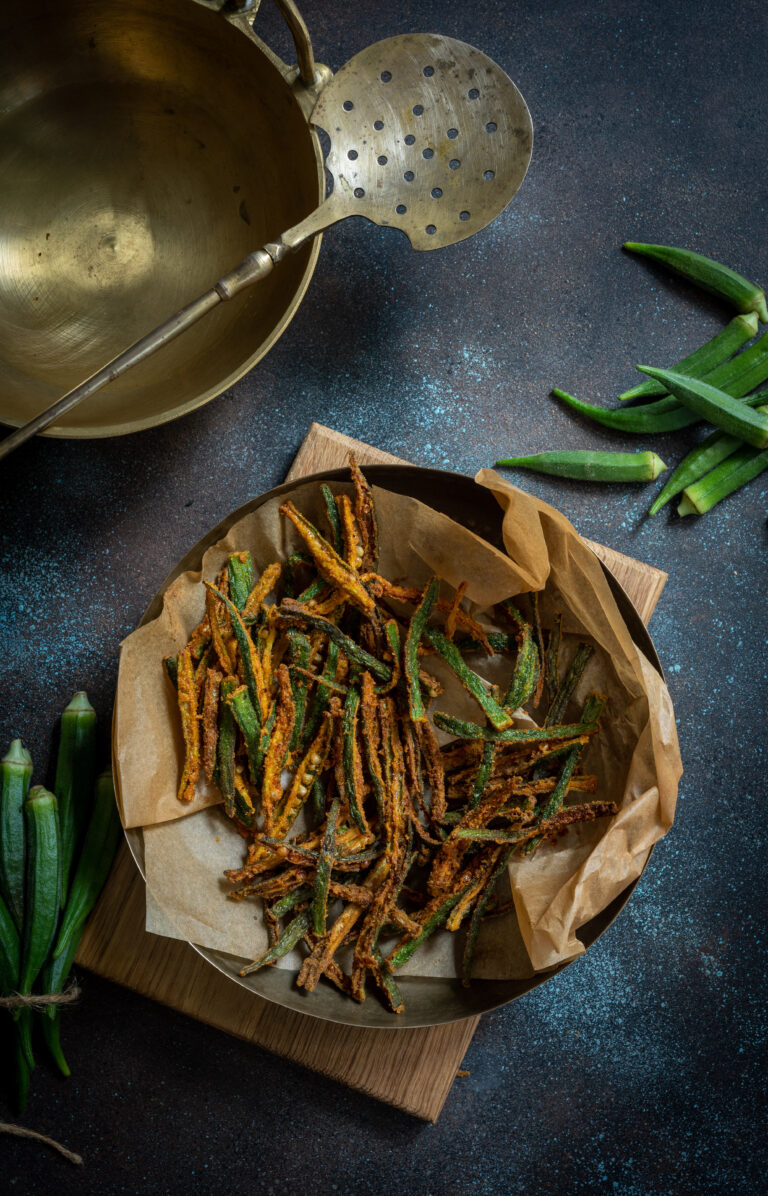Okra, also known as lady’s finger, is a basic Indian vegetable that grows in any weather, any soil and any season. This means that it recurs as an ingredient in cuisines across the country, and there must surely be a hundred varieties or versions of cooking it. To give you some examples of its versatility: I’ve had it in a yoghurt raita and I’ve also had it in a tamarind sauce gravy, two very different concepts altogether. My most favourite way to eat okra, however, is in a dry stir fry that I make at home almost every other day as the sabzi part of our traditional Gujarati thaali. However, making a preparation attractive to the rest of my family, particularly the younger generation, has been a challenge. That was when I discovered that I could convince them to eat this vegetable by turning it into fried okra chips.
Initially, my plan was to simply introduce my kids to the wonders of a good okra dish and then have them develop enough of a liking for the vegetable that they also became interested in the regular stir-fry. I must confess this plan has backfired – we are all too addicted to this version! So it’s become more of a treat and less of a staple in my home.
Still, as I continue to find ways to increase the vegetable quotients in my kids’ diets, I’m glad to have figured out this simple yet delicious recipe. I have noticed that youngsters take some time to grow out of the feeling that brinjal or okra, vegetables that have a certain texture, are icky. Even though mine are now adults, they still have these dislikes. Preparing these vegetables they are picky about using a technique that makes the stickiness go away, such as frying, makes a difference. Do you have any such tips and tricks you’d like to share too?
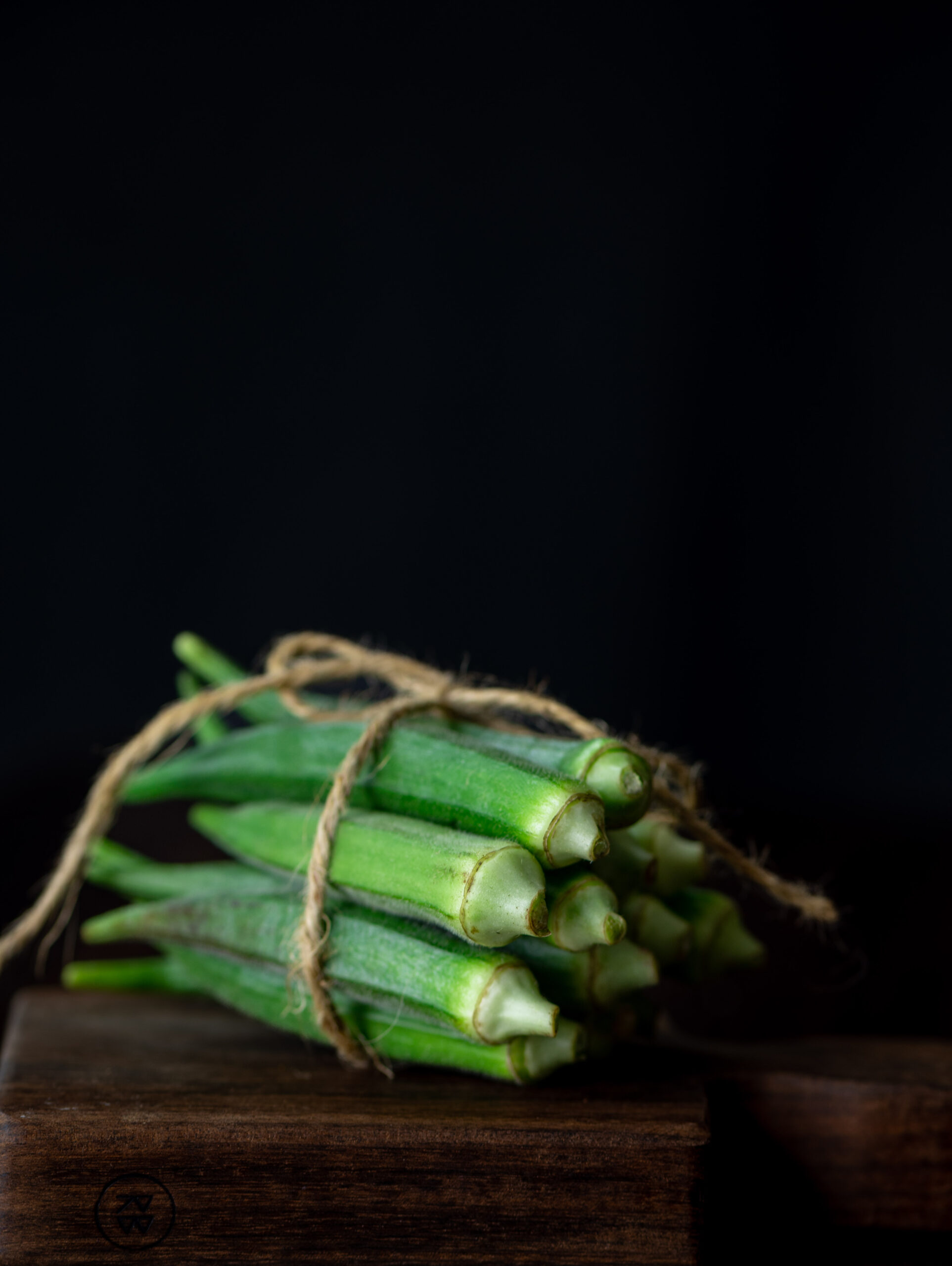
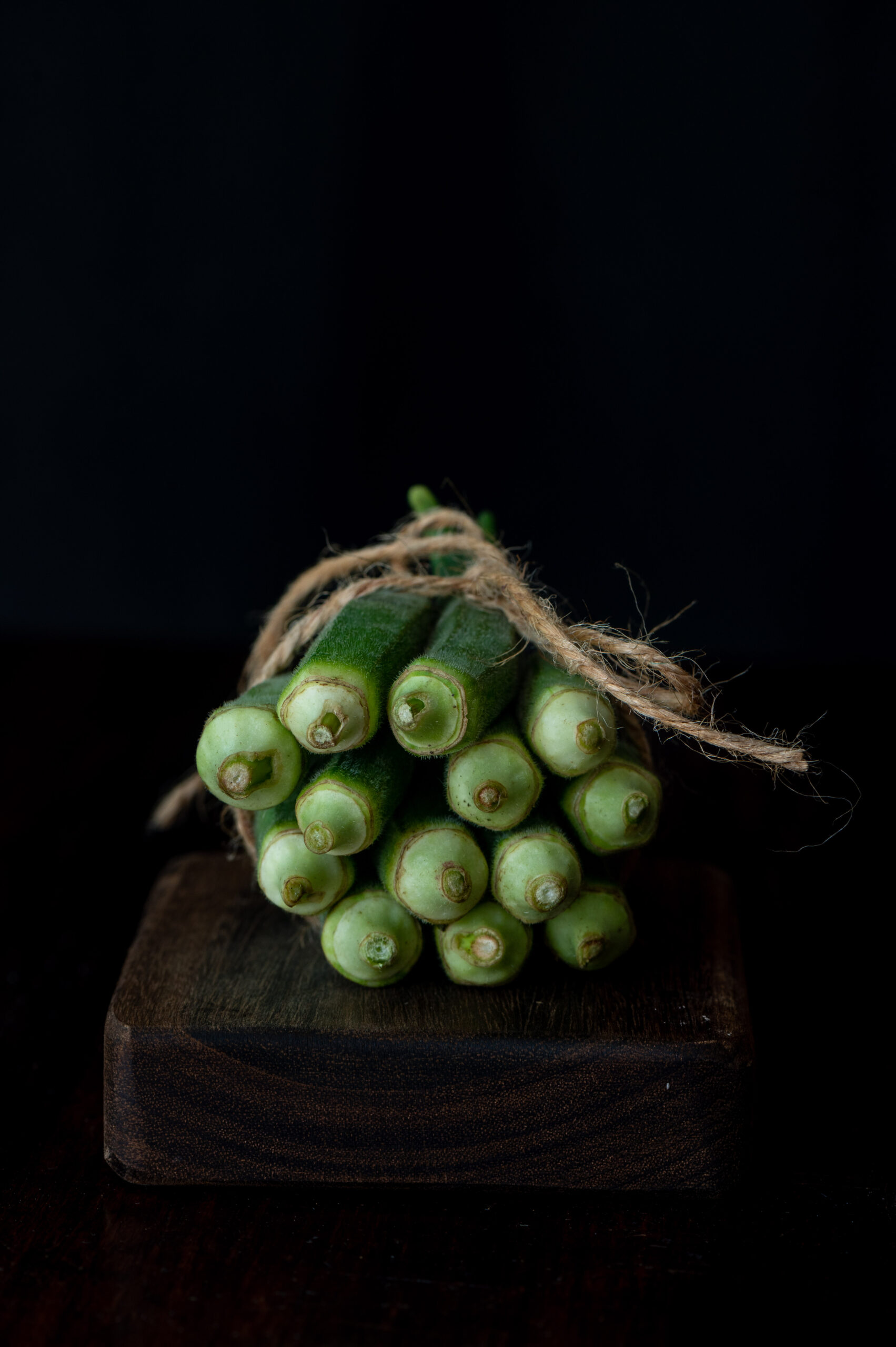
Another great thing about these fried okra chips is that they require very little prep time, and as long as you have your usual spices and some fresh okra around, you can make them quite quickly. As with most vegetables, freshness is a key element when it comes to okra. When I was growing up, my mother taught me not only how to cook but also how to pick out the best vegetables when shopping for groceries. While you may not be able to do this at the market, when you’re about to cook, the secret to knowing how good your okra is this: snap the tiny piece of the tail end off. If it snaps immediately, it’s fresh. If it is tender, it’s losing its freshness.
When this happens, depending on the dish in question and the extent of the vegetable’s over-ripeness, I either use it in another preparation or else I discard it. By discard I mean that I go and feed it to the cows in the street. Most of the older vegetables amidst my groceries or in my fridge are “discarded” this way. In a sense, they are never wasted.
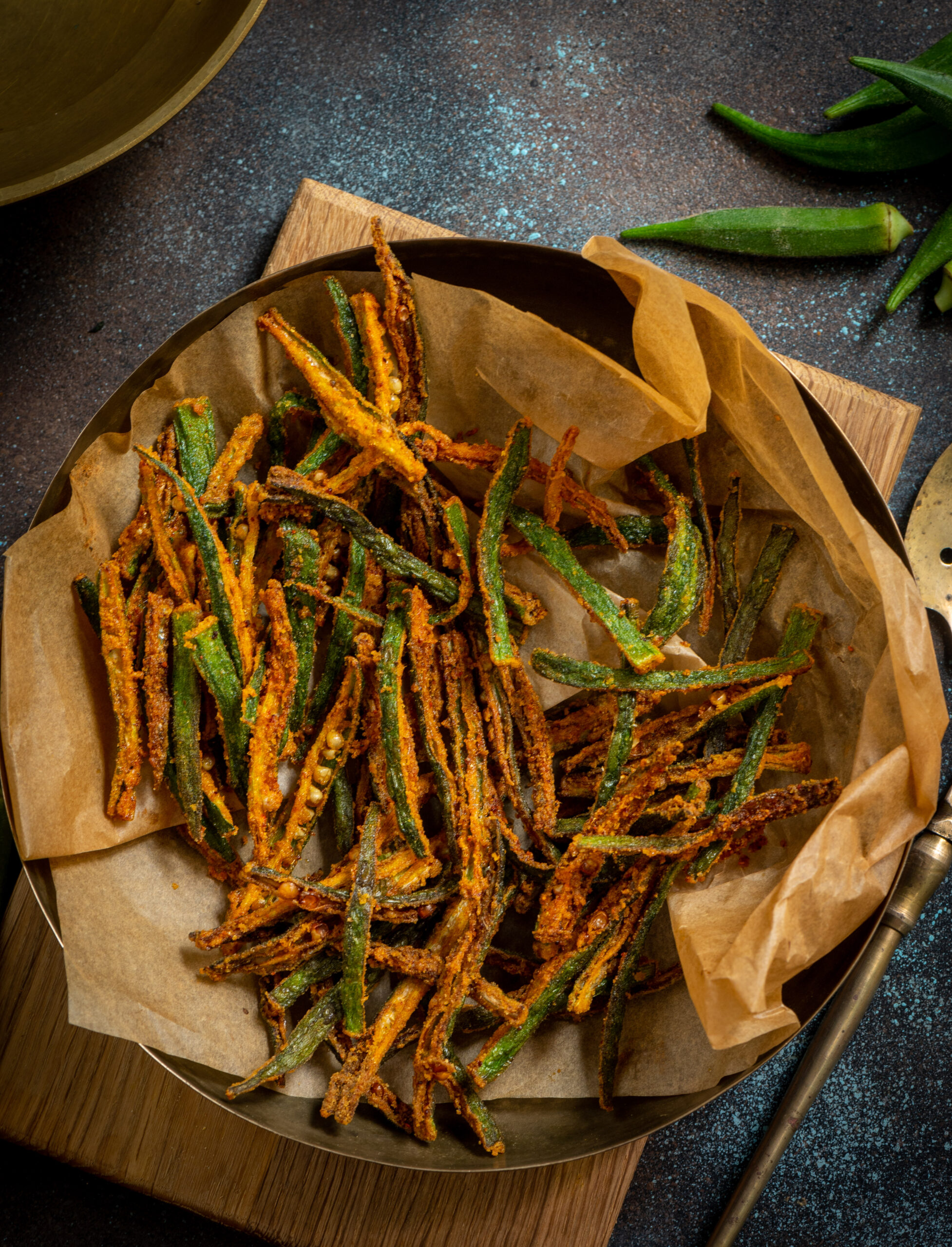
Fried Okra Chips
(Yield: Serves 4)
250 grams okra (sliced lengthwise)
Salt to taste
2 teaspoon Kashmiri chili powder
½ teaspoon turmeric powder
1 teaspoon cumin powder
½ teaspoon garam masala
5 tablespoons chickpea flour
1 teaspoon chaat masala
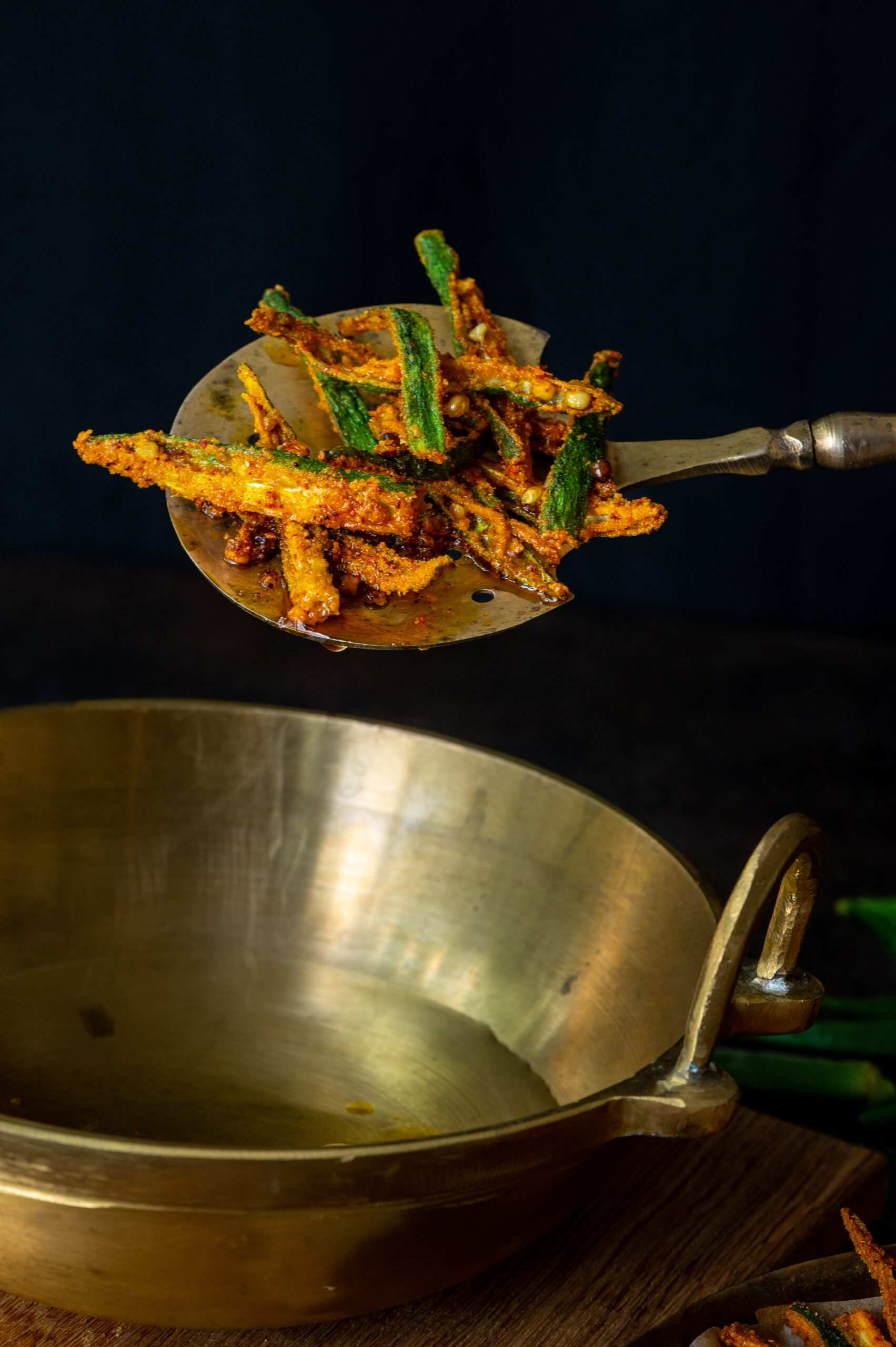
Add all the spices and the chickpea flour to the okra slices, and massage well using your hands. Allow to sit for half an hour.
Then, heat the oil. Once the oil is heated, drop in the coated okra slices. Fry well until golden. Drain on a paper. Sprinkle with chaat masala for an additional boost of lovely flavouring. You can store the fried okra in a tin if consuming later.
These fried okra chips are a wonderful snack on their own, and also work as an accompaniment to a main course. I’d love to know what you think of them, and I’d especially love to know if you have more suggestions about how to sneak nutritious vegetables into the diets of the vegetable-averse!
